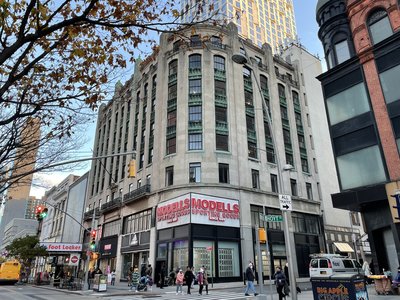Mayor’s new subway safety plan goes into effect
By Matthew Fischetti
mfischetti@queensledger.com
A new subway safety plan went into effect on Monday, but homeless advocates fear the “crisis mode” plan doesn’t go far enough to deal with the root causes of the problem.
Mayor Eric Adams announced the initiative as violence in the city’s subway system is on the rise. Even since the Friday announcement, there have been a series of violent attacks.
The plan includes outreach teams for the homeless, cross-agency teams that include clinicians and police, increased police presence and enforcement, and increased availability of safe haven and stabilization beds.
While the mayor’s plan tries to strike a balance between assuring public safety while also helping homeless individuals, advocates say the plan leans too heavily on public safety without getting homeless people the adequate resources they need.
“There are aspects of this report that have an encouraging amount of information, that they’re aware of the problem and some of the root causes of the problem, but the solutions they offer are less about addressing those root causes and are more directed to a crisis mode,” Dr. Deborah Padgett, a professor and researcher on homelessness at NYU Silver, said in an interview.
Dr. Padgett said that models like converting hotels into supportive housing, as former-mayor Bill de Blasio did early in the pandemic, would be one of the primary solutions to addressing homelessness.
Dr. Padgett published a study in 2021 examining the effectiveness of these programs, and in New York found improvements in “general medical and mental health, personal hygiene, feelings of safety (from COVID-19 as well as violence), improved sleep, diet and nutrition, easier access to public assistance such as food stamps, and other advantages of having a stable address for applying for a job.”
The study also cites data from Seattle, where similar programs were enacted, that showed it increased transitions to permanent housing and keeping appointments with health care providers.
“And for those of us who are advocates, it’s not a good sign to increase the police presence, because it’s ultimately going to end up probably criminalizing more than it’s actually going to help homeless persons get off the street or out of the subways,” Dr. Padgett said. “And without someplace for them to go other than crowded shelters, this problem is not going to be resolved.”
Part of the subway safety plan includes joint state and city “Safe Options Support Critical Time Intervention” teams.
Critical Time Intervention was a model developed in the 80’s as a phase-approached of engagement with vulnerable populations to help them adequately transition through periods of life and sustain success after they graduate from a nine-month program.
While the state and city teams utilize the name Critical Time Intervention, one of the creators of the model says the plan falls short of actually achieving it.
“We developed critical time intervention and that does work, but you need somewhere for people to go to help people make a transition,” said Dr. Ezra Susser, director of the Psychiatric Epidemiology Training program at Columbia University. “And if there’s nowhere to transition to, then it’s not really what critical time intervention is.”
Dr. Susser’s model of critical time intervention has proven to be very successful. In a randomized trial at 18 months after the original project started, time spent being homeless was reduced by two-thirds.
The study also found that it was more cost-effective than typical measures.
While the subway safety plan will increase the availability of 140 Safe Haven Beds and nearly 350 Stabilization Beds in 2022, something Dr. Suzzer emphasizes is a good measure, he believes it falls short of really stemming the tide of homelessness.
According to the Coalition for the Homeless, there were over 48,000 homeless people in New York City in December 2021.
On the campaign trail, Adams introduced a plan to convert 25,000 hotel rooms into supportive housing for the homeless, but there have been problems making the proposal a reality.
Nonprofits that provide services in supportive housing have taken anywhere from six months to two years to get reimbursed, according to Gothamist. There have also been issues with zoning regulations.
“The city and state need to make a big investment now in order to make a dent in the problem,” said Dr. Susser.





